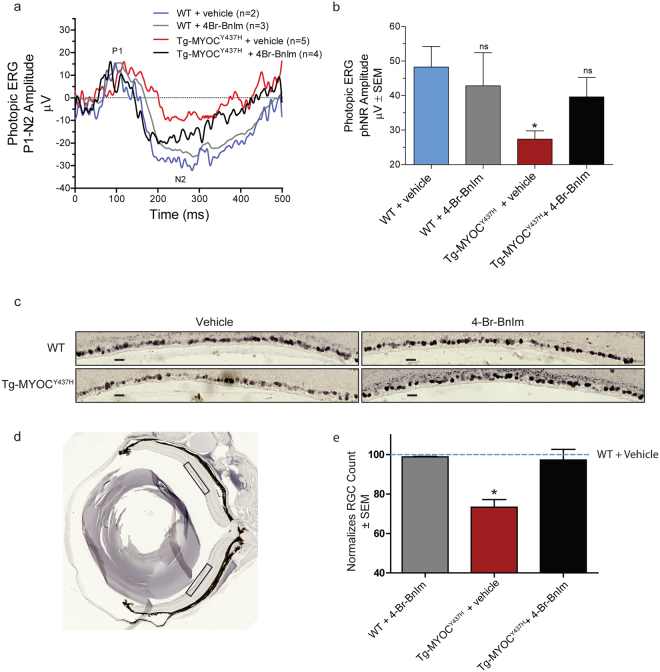Figure 3.
4-Br-BnIm reversed the light-adapted response phenotype in transgenic Tg-MYOCY437H mice and protects RGCs. (a) Light-adapted electroretinography (LA-ERG) tracings of WT and Tg-MYOCY437H mice without and with 4-Br-BnIm treatment. (b) Quantification of the PhNR from LA-ERG tracings. Statistical analysis was carried out using one-way ANOVA with Bonferroni post-hoc test. *P < 0.05, F = 2.48, df = 27. n values represent individual mice. WT + vehicle (n = 2), WT + 4-Br-BnIm (n = 3), Tg-MYOCY437H + vehicle (n = 5), Tg-MYOCY437H + 4-Br-BnIm (n = 4). (c) Representative images showing DAB stained NeuN positive cells in a 350 µm length of RGC layer from the midperipheral region of the retina from each treatment group. Scale bars = 20 µm. (d) A representative whole eye section from a WT vehicle mouse, boxes identify the region of retina used in the quantitation of RGC density. (e) Quantification of RGC density normalized to a WT vehicle treated mouse. Statistical analysis was carried out using two-tailed unpaired t-test. *P < 0.05, t = 3.63, df = 4. WT + 4-Br-BnIm (n = 3), Tg-MYOCY437H + vehicle (n = 3), Tg-MYOCY437H + 4-Br-BnIm (n = 3).

